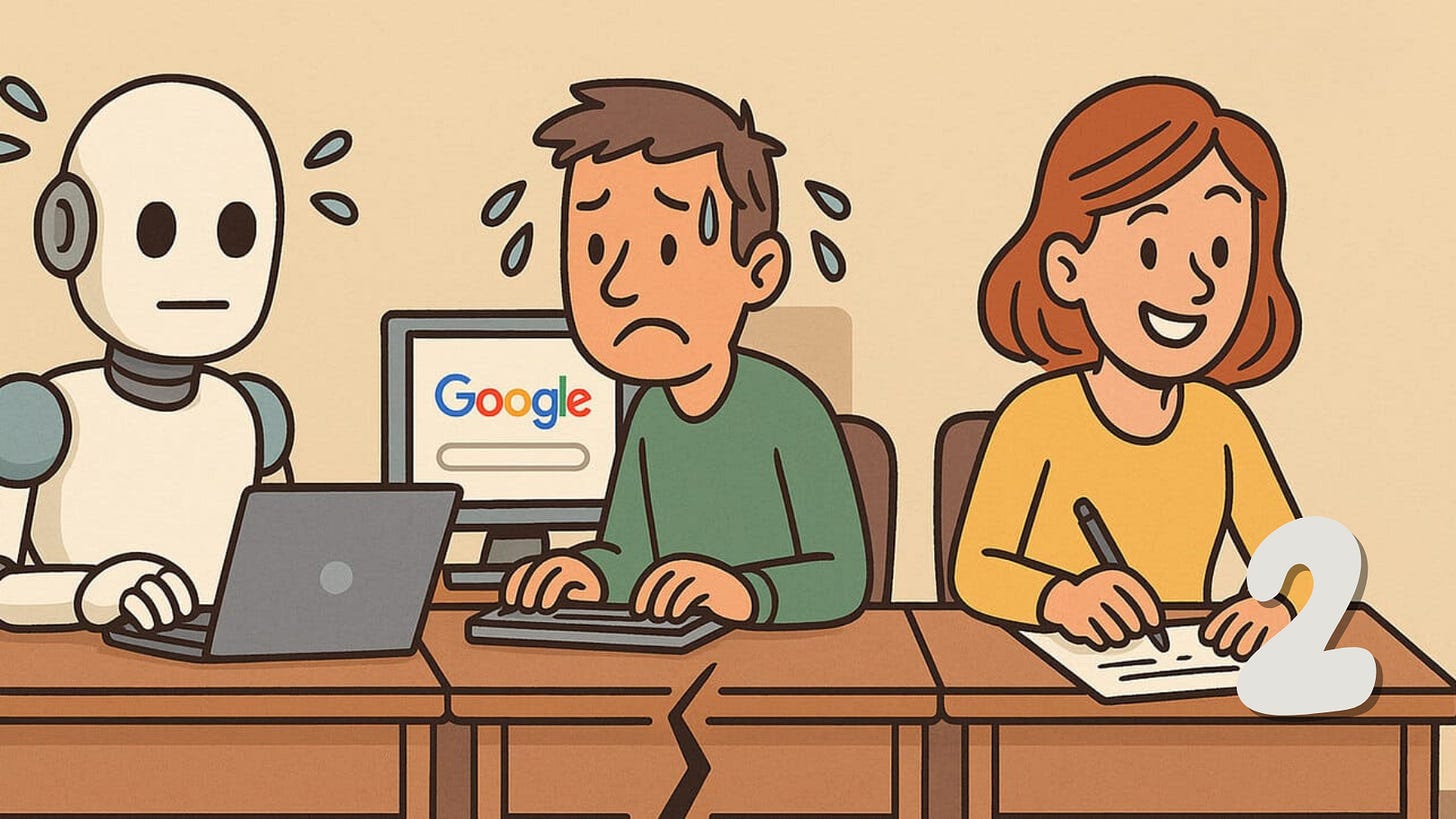🎉 Midjourney Debuts Video, AI Hurts Your Memory, AI TikTok Sales Explore, OpenAI vs Microsoft, New McKinsey AI Report
Midjourney V1 Video Launch, Brain on Bots, Luo’s AI Livestream, Trouble in Paradise, AI Agents Drive Results
Welcome to this week’s edition of AImpulse, a five point summary of the most significant advancements in the world of Artificial Intelligence.
Here’s the pulse on this week’s top stories:
What’s Happening: Midjourney has released its first video generation model, allowing users to animate still images into short clips — just days after being hit with a copyright lawsuit by Disney and Universal.
The details:
Called V1, the tool auto-animates images or responds to user prompts describing camera movement and scene dynamics.
Each job outputs four 5-second clips, extendable to 20 seconds, priced at 8x image costs — reportedly 25x cheaper than competitors.
It supports both Midjourney and external images, maintaining the platform’s signature aesthetic.
CEO David Holz framed V1 as a foundational step toward real-time, open-world simulation via images, video, and 3D.
Why it matters: V1 won’t compete directly with models like Veo 3 due to its lack of audio and real video input — but its distinctive style and speed make it a compelling first step toward Midjourney’s long-term vision of immersive digital worlds.
What’s Happening: A new MIT study found that students relying on ChatGPT to write essays showed significantly lower brain activity and retention than peers who wrote independently or used traditional research tools.
The details:
54 students were split into three groups and monitored via EEG as they wrote SAT essays over four months.
One group used ChatGPT, another used Google Search, and the last wrote without any tools.
The ChatGPT group had the weakest neural connectivity and underperformed across linguistic, neural, and scoring metrics.
The unaided writers showed the strongest activity in brain areas linked to creativity, memory, and processing.
Why it matters: Though limited in scope, the study underscores the potential downside of early reliance on AI tools. As LLMs enter classrooms, the research raises red flags about long-term cognitive development in students who default to AI.
What’s Happening: Chinese tech personality Luo Yonghao used an AI-generated avatar on a six-hour livestream — outperforming his own human-led sessions and generating over $7M in sales on Baidu’s e-commerce platform.
The details:
Two AI avatars promoted 133 products, mimicking human gestures and responding to live viewer comments.
The stream drew 13M viewers and topped Luo’s real stream performance in just 26 minutes.
Powered by Baidu’s ERNIE model, the bots generated 97K+ characters of product copy.
This was the first stream to use “dual digital avatars,” featuring real-time dialogue between Luo and his AI twin.
China’s live commerce market now employs over 100K digital humans, cutting costs by 80% and boosting conversions by 62%.
Why it matters: When AI can out-sell humans with lifelike interactions, it raises questions about the future of authenticity in commerce. As realism increases, the commercial edge of human-led sales could disappear in favor of algorithmic precision.
What’s Happening: The Wall Street Journal reports that tensions between OpenAI and Microsoft have reached a tipping point, with OpenAI now considering antitrust action over disputes involving compute, IP rights, and governance.
The details:
The latest conflict centers on OpenAI’s $3B Windsurf acquisition, with the company seeking to limit IP access due to Microsoft’s GitHub Copilot.
OpenAI may accuse Microsoft of anticompetitive behavior and request a federal probe.
Microsoft resisted key aspects of OpenAI’s PBC restructuring and reportedly met with the company last month to renegotiate terms.
OpenAI is also moving to diversify away from Microsoft, recently partnering with Google for cloud compute.
Why it matters: What began as the AI industry’s defining alliance is now unraveling. If OpenAI files suit, it could set off a landmark legal and competitive battle, with each side jockeying to control the trajectory toward AGI.
What’s Happening: McKinsey’s latest report reveals why most companies aren’t seeing ROI from their AI investments — arguing that agent-based systems, not just automation, are the key to unlocking real value.
The details:
The firm calls it the “genAI paradox”: 80% of companies use AI, yet most report no meaningful earnings impact.
Broad tools often improve processes in ways that are hard to measure or monetize.
McKinsey urges companies to re-engineer operations around agents instead of bolting AI onto old workflows.
Success, they say, hinges on leadership willing to stop experimentation and drive strategic change from the top.
Why it matters: AI hype is everywhere, but without real operational change, most efforts fall flat. Firms embracing agents and rebuilding workflows from the ground up could outpace those investing millions into copilots with no clear path to transformation.






